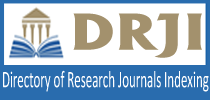The Effectiveness of Crossword Puzzle in Improving Mufradat Skills
Abstract
Keywords
Full Text:
PDFReferences
Alahmadi, A., & Foltz, A. (2020). Effects of Language Skills and Strategy Use on Vocabulary Learning Through Lexical Translation and Inferencing. Journal of Psycholinguistic Research, 49(6), 975–991. https://doi.org/10.1007/s10936-020-09720-9
Alotaibi, F. D., Siraj, S., & Ismail, W. M. A. S. (2019). Design and development of mobile-learning model for teaching arabic language reading skills to Non-Arab speakers in higher education institutions. Opcion, 35(Special Issue 19), 2662–2684.
Alqahtani, M. (2015). The Importance of Vocabulary in Language Learning and How to be Taught. International Journal of Teaching and Education, III(3), 21–34. https://doi.org/10.20472/te.2015.3.3.002
Astuti, W. (2016). Berbagai Strategi Pembelajaran Kosa Kata Bahasa Arab. Jurnal Komunikasi Dan Pendidikan Islam, 5(2), 178–190.
Baharudin, H., & Ismail, Z. (2014). Vocabulary learning strategies and arabic vocabulary size among pre-university students in Malaysia. International Education Studies, 7(13), 219–226. https://doi.org/10.5539/ies.v7n13p219
Davis, T. M., Shepherd, B., & Zwiefelhofer, T. (2009). Reviewing for exams: do crossword puzzle help in the success of student learning? The Journal of Effective Teaching, 9(3), 4–10. http://digital.library.wisc.edu/1793/34692
Fachrozi, I. F., Rahmawati, R., Andini, M. A., Tampubolon, E. M., & Tarigan, E. A. B. (2021). The Use of Crossword Puzzles as the Way to Increase Student’s Vocabulary Mastery at SMA Tamansiswa Binjai. Linguistic, English Education and Art (LEEA) Journal, 4(2), 249–256. https://doi.org/https://doi.org/10.31539/leea.v4i2.1851
Fauziah, R., Ritonga, M., & Alrasi, F. (2020). Korelasi Tsiqah Tahfidz Al-Qur’an Dengan Maharah Al-Lughah Al-‘Arabiyyah Mustawa Tsalits Ma’Had Az-Zubair Bin Al-Awwam. El-Tsaqafah : Jurnal Jurusan PBA, 19(1), 25–36. https://doi.org/10.20414/tsaqafah.v19i1.2342
Frey, B. B. (2018). The SAGE Encyclopedia of Educational Research, Measurement, and Evaluation. https://doi.org/10.4135/9781506326139 NV - 4
Galway, L. P., Bell, N., Al Shatari, S. A. E., Hagopian, A., Burnham, G., Flaxman, A., Weiss, W. M., Rajaratnam, J., & Takaro, T. K. (2012). A two-stage cluster sampling method using gridded population data, a GIS, and Google Earth TM imagery in a population-based mortality survey in Iraq. International Journal of Health Geographics, 11, 1–9. https://doi.org/10.1186/1476-072X-11-12
Holimi, M. (2019). Pembelajaran Mufrodat dengan Menggunakan Media Gambar. Muhadasah:Jurnal Pendidikan Bahasa Arab, 1(1), 86–102.
Khan, R., Radzuan, N., Shahbaz, M., Ibrahim, A., & Mustafa, G. (2018). The Role of Vocabulary Knowledge in Speaking Development of Saudi EFL Learners. Arab World English Journal, 9(1), 406–418. https://doi.org/10.24093/awej/vol9no1.28
Kolte, S., Jadhav, P. R., Deshmukh, Y. A., & Patil, A. (2017). Effectiveness of crossword puzzle as an adjunct tool for active learning and critical thinking in Pharmacology. International Journal of Basic & Clinical Pharmacology, 6(6), 1431. https://doi.org/10.18203/2319-2003.ijbcp20172236
Patrick, S., Vishwakarma, K., Giri, V. P., Datta, D., Kumawat, P., Singh, P., & Matreja, P. S. (2018). The usefulness of crossword puzzle as a self-learning tool in pharmacology. Journal of Advances in Medical Education & Professionalism, 6(4), 181–185. http://www.ncbi.nlm.nih.gov/pubmed/30349830%0Ahttp://www.pubmedcentral.nih.gov/articlerender.fcgi?artid=PMC6191832
Rabiatul Aribah, M. I., Nik Hanan, M., Tg Ainul Farha, T. A. R., & Nadhilah, A. P. (2014). Vocabulary Learning Strategies: Differences Between Arabic and Non-Arabic Majoring Students at the International Islamic University Malaysia. Middle-East Journal of Scientific Research (Language for Communication and Learning), 20, 28–32. https://doi.org/10.5829/idosi.mejsr.2014.20.lcl.204
Rakimahwati. (2014). The effectiveness of a crossword puzzle game in improving numeracy ability of kindergarten children. Asian Social Science, 10(5), 79–84. https://doi.org/10.5539/ass.v10n5p79
Ritonga, A. W., Ritonga, M., Septiana, V. W., & Mahmud. (2021). Crossword puzzle as a learning media during the covid-19 pandemic: HOTS, MOTS or LOTS? Journal of Physics: Conference Series, 1933(1), 012126. https://doi.org/10.1088/1742-6596/1933/1/012126
Rusmawan, P. N. (2018). Using Crossword Puzzle to increase Students’ Vocabularies for Writing Skill in Descriptive Text. ENGLISH FRANCA : Academic Journal of English Language and Education, 2(1), 13. https://doi.org/10.29240/ef.v2i1.248
Sahuni, S., Budiningsih, I., & P, L. M. (2020). Interaction of Learning Media With Learning Interest in Arabic Learning Outcomes. Akademika, 9(02), 43–52. https://doi.org/10.34005/akademika.v9i02.871
Samsun Baharun, M. N. A., Mohamad, N., Wan Abd Rahman, A., & Ramli, Z. (2021). Investigating Mastery Level of Arabic Academic Vocabulary (AAV): A Study Among Malaysian Public Universities. International Journal of Academic Research in Progressive Education and Development, 10(1), 268–285. https://doi.org/10.6007/ijarped/v10-i1/8547
Sartika, F., & Ritonga, M. (2020). Ta’tsir Isti’mal al-Wasa’il al-Sam’iyyah al-Bashariyyah “Ala Nataij Ta’lim Mufradat al-Lughah al-’Arabiyyah Lilfashl al-Rabi” fi al-Madrasah al-Ibtida’iyah al-Islamiyyah al-Hukumiyyah Parambahan Lambasi Payakumbuh. Alfazuna, 4(2), 144–154. http://jurnalftk.uinsby.ac.id/index.php/alfazuna/article/view/592/261
Xuan, D., Ismail, W. M., & Zailani, M. A. (2020). Non-native Arabic learners’ social media usage and motivation influencing learning of Arabic language in Malaysian public universities. International Journal of Language Education, 4(2), 258–275. https://doi.org/10.26858/ijole.v4i2.13980
Zainuddin, N., & Sahrir, M. S. (2016). Multimedia Courseware for Teaching Arabic Vocabulary: Let’s Learn from the Experts. Universal Journal of Educational Research, 4(5), 1167–1172. https://doi.org/10.13189/ujer.2016.040529
Zurqoni, Retnawati, H., Rahmatullah, S., Djidu, H., & Apino, E. (2020). Has arabic language learning been successfully implemented? International Journal of Instruction, 13(4), 715–730. https://doi.org/10.29333/iji.2020.13444a
DOI: https://doi.org/10.31869/aflj.v1i2.2864
Article Metrics
Abstract view : 564 timesPDF - 307 times
Refbacks
- There are currently no refbacks.
INDEXED BY:








 This work is licensed under a Creative Commons Attribution-ShareAlike 4.0 International License.
This work is licensed under a Creative Commons Attribution-ShareAlike 4.0 International License.




